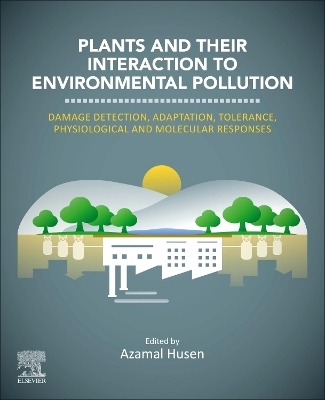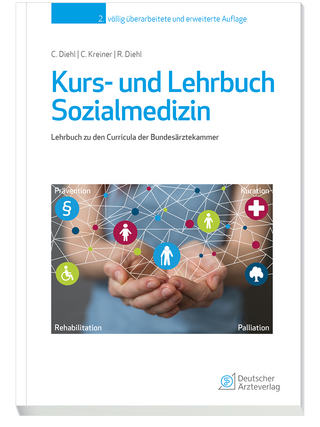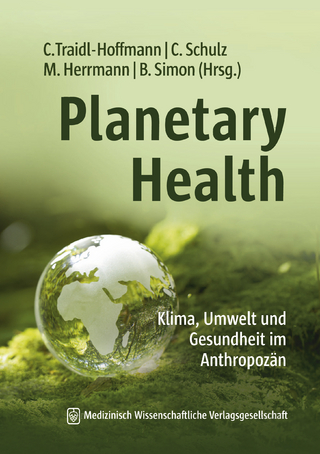
Plants and their Interaction to Environmental Pollution
Elsevier - Health Sciences Division (Verlag)
978-0-323-99978-6 (ISBN)
The complex interplay among other emerging pollutants, namely, radioisotopes, cell-phone radiation, nanoparticles, nanocomposites, heavy metals etc. and their impact on plant adaptation strategies, and possibility to recover, mitigation, phytoremediation, etc., also needs to be explored. Further, it is necessary to elucidate better the process of the pollutant’s uptake by plant and accumulation in the food chain, and the plant resistance capability against the various kinds of environmental pollutants. In this context, the identification of tolerance mechanisms in plants against pollutants can help in developing eco-friendly technologies, which requires molecular approaches to increase plant tolerance to pollutants, such as plant transformation and genetic modifications. Pollutant-induced overproduction of reactive oxygen species that cause DNA damage and apoptosis-related alterations, has also been examined. They also trigger changes at the levels of transcriptome, proteome, and metabolome, which has been discussed in this book.
Azamal Husen served as Professor and Head of the Department of Biology, University of Gondar, Ethiopia and is a Foreign Delegate at Wolaita Sodo University, Wolaita, Ethiopia. Previously, he was a Visiting Faculty of the Forest Research Institute, and the Doon College of Agriculture and Forest at Dehra Dun, India. Husen’s research and teaching experience of 20 years includes biogenic nanomaterial fabrication and application, plant responses to nanomaterials, plant adaptation to harsh environments at the physiological, biochemical, and molecular levels, herbal medicine, and clonal propagation for improvement of tree species. Dr Husen contributed to R&D projects of World Bank, ICAR, ICFRE, JBIC etc. He has >250 publications . He is Series Co-Editor of ‘Plant Biology, Sustainability and Climate Change’, Elsevier.
1. Plants and their unexpected response to environmental pollution: an overview 2. Effect of uv-b radiation on plants growth, active constituents and production 3. Effect of elevated CO2 on plants growth, active constituents and production 4. Effect of elevated O3 on plants growth, active constituents, and production 5. Plants response to SO2 or acid deposition 6. Fly ash toxicity, concerned issues and possible impacts on plant health and production 7. Effect of coal-smoke pollution on plants growth, metabolism and production 8. Effect of heavy metal pollution on plants: damage detection, repair, acclimation and adaptation response 9. Interaction of nanoparticles and nanocomposite with plant and environment 10. Toxic effects of essential metals on plants: from damage to adaptation responses 11. Phytoremediation response of plants: challenges and opportunities 12. Pesticide toxicity and their impact on plant growth, active constituents and productivity 13. Plant responses to water pollution 14. Plant response to industrial waste 15. Radioisotopes and their impact on plants 16. Effects of cell phone radiation on plants growth, active constituents and production 17. Effects of major munitions compounds on plant health and function 18. Aquatic macrophytes and trace elements: deleterious effects, biomarkers, adaptation mechanisms and potential new wave of phytoremediation processes 19. Production and role of plants secondary metabolites under various environmental pollution 20. Plant proteomics and environmental pollution 21. Genetic modification and genome engineering of plants for adverse environmental pollution
| Erscheinungsdatum | 11.11.2022 |
|---|---|
| Zusatzinfo | Approx. 150 illustrations; Illustrations, unspecified |
| Verlagsort | Philadelphia |
| Sprache | englisch |
| Maße | 191 x 235 mm |
| Gewicht | 950 g |
| Themenwelt | Medizin / Pharmazie ► Medizinische Fachgebiete ► Arbeits- / Sozial- / Umweltmedizin |
| Naturwissenschaften ► Biologie ► Biochemie | |
| Naturwissenschaften ► Biologie ► Ökologie / Naturschutz | |
| Technik ► Umwelttechnik / Biotechnologie | |
| ISBN-10 | 0-323-99978-6 / 0323999786 |
| ISBN-13 | 978-0-323-99978-6 / 9780323999786 |
| Zustand | Neuware |
| Haben Sie eine Frage zum Produkt? |
aus dem Bereich


